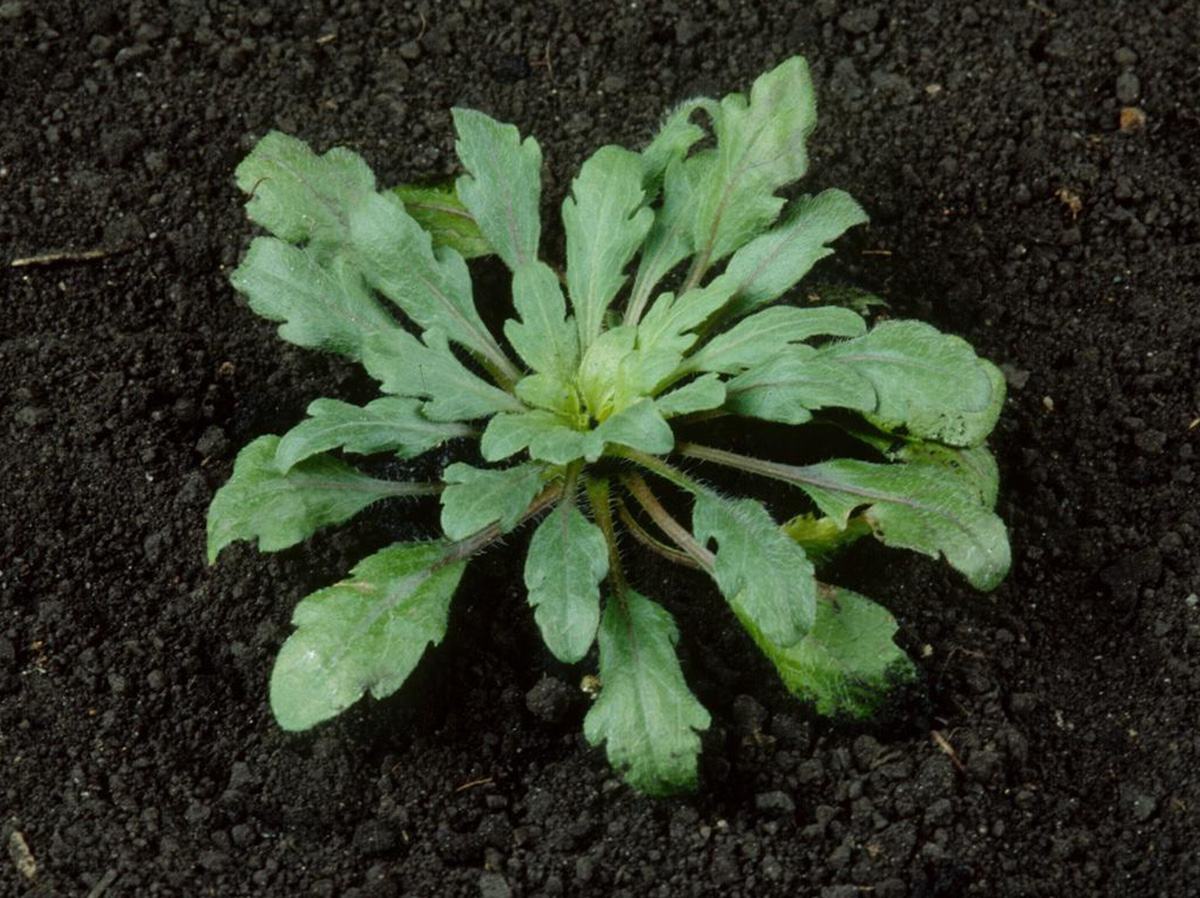
By Sarah Browning, Extension Educator, Lancaster Co.
It’s time to get ready — the best time of year to control those perennial, biennial and winter annual weeds is just a couple weeks away. Did you have pretty purple blooming henbit back in March and April? Ground ivy creeping through your lawn? Or dandelions that popped out with the first warm days in May? Fall is the time to begin taking back control of your landscape. This weed-control window of time starts in early September and stretches into late October. Just keep in mind the perennial and biennial weeds must have green, living foliage so they can take in the herbicides applied.
USE THE WEED’S LIFE CYCLE TO YOUR ADVANTAGE
Fall is the best time of year to control troublesome weeds for several reasons. Perennial weeds, like dandelions, ground ivy, poison ivy, field bindweed, curly dock and Canada thistle, respond to shorter day lengths and cooler nights by moving carbohydrates from the leaves down to their roots for winter storage.
Starting in September, herbicides are transported to the roots along with the carbohydrates killing the entire plant instead of just the leaves. And even if the chemical doesn’t completely kill the weed, the plant goes into winter in a weakened condition and is much more susceptible to winter kill.
Biennial weeds, like musk thistle, grow into a small flat rosette of foliage their first year of growth. These rosettes are the ideal stage for herbicide control in fall.
Winter annual weeds, such as henbit, marestail and the mustards (field pennycress, shepherds purse, tansy mustard, blue mustard, etc.) germinate in the fall, overwinter as a small rosette of foliage and begin growing again very early next spring. In fall, they can be killed as they germinate with preemergence herbicides or targeted as young plants with post-emergence products.
Before applying any herbicide, know the weeds you are trying to control. If you’re not sure, get help from your local garden center or Nebraska Extension office. Nebraska Extension in Lancaster County offers free plant identification, as well as control recommendations. Horticulturists are available Monday–Friday, 9 a.m.–noon. Samples can be dropped off 8 a.m.–4:30 p.m. Email photos to sarah.browning@unl.edu.
Fall control of annual weeds like crabgrass, foxtail, knotweed or purslane is unnecessary and wasteful. These weeds only live for one summer and naturally die in fall. Target them with the application of preemergence herbicide the first week of May and again in early July.
PERENNIAL & BIENNIAL WEED CONTROL
Begin perennial and biennial weed control in mid-September. Many products are available for broadleaf weed control. Look for products containing the active ingredients 2,4-D, carfentrazone, sulfentrazone, quinclorac or triclopyr. These products are selective and won’t damage grass, but use them with caution in landscape beds since accidental spraying or spray drift can damage trees, shrubs and ornamental plants. Quinclorac is particularly effective at controlling wild violets.
If grass growing into landscape beds is a problem, fluazifop (Ortho’s Grass-B-Gon and similar products) selectively kill grasses, but won’t damage your perennials.
Consider adding a spreader-sticker to your tank mix for even better control. Spreader-stickers are additives that help the chemical you apply spread over the weed leaf surface and adhere to it better. When you’re trying to control weeds with waxy leaf surfaces, like wild violets, a spreader-sticker is particularly helpful. Look for products like Earl May’s Turbo Spreader Sticker.
When targeting difficult weeds, don’t expect 100% control with one herbicide application. Two or three herbicide applications, 2–3 weeks apart will usually be necessary to control them. Make your first application and, if in 2–3 weeks there is regrowth or green leaves still remaining on the plants, make a second application.
After making the herbicide application, don’t mow for 2–3 days to allow the plants to take in the chemical.
WINTER ANNUAL WEED CONTROL
If winter annual weeds, such as henbit, chickweed, and annual bluegrass, are a problem in your lawn or landscape, a fall preemergence herbicide application should be made in early September.
Barricade (prodiamine), Dimension (dithiopyr) and Pendulum (pendimethalin) are commonly available home-use preemergence products labeled for use in turf or landscape plantings. Check the product’s active ingredient statement on the front of the label for these chemicals to make sure you are using the correct herbicide.
If you miss the application of preemergence herbicide in early September, then a post-emergence herbicide can be applied from late September to late October and will kill many newly germinated winter annual weeds.